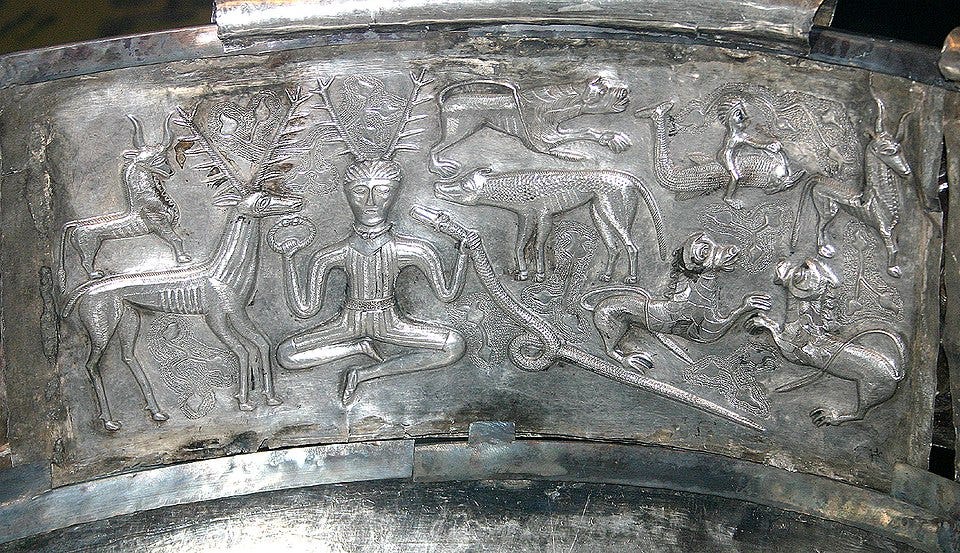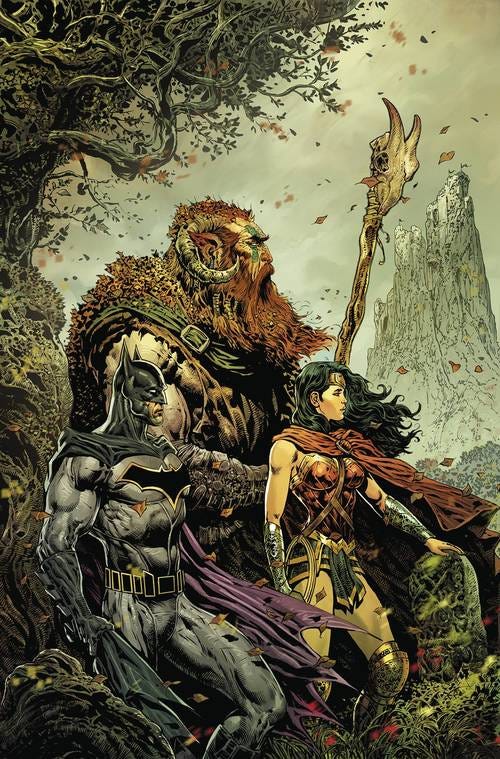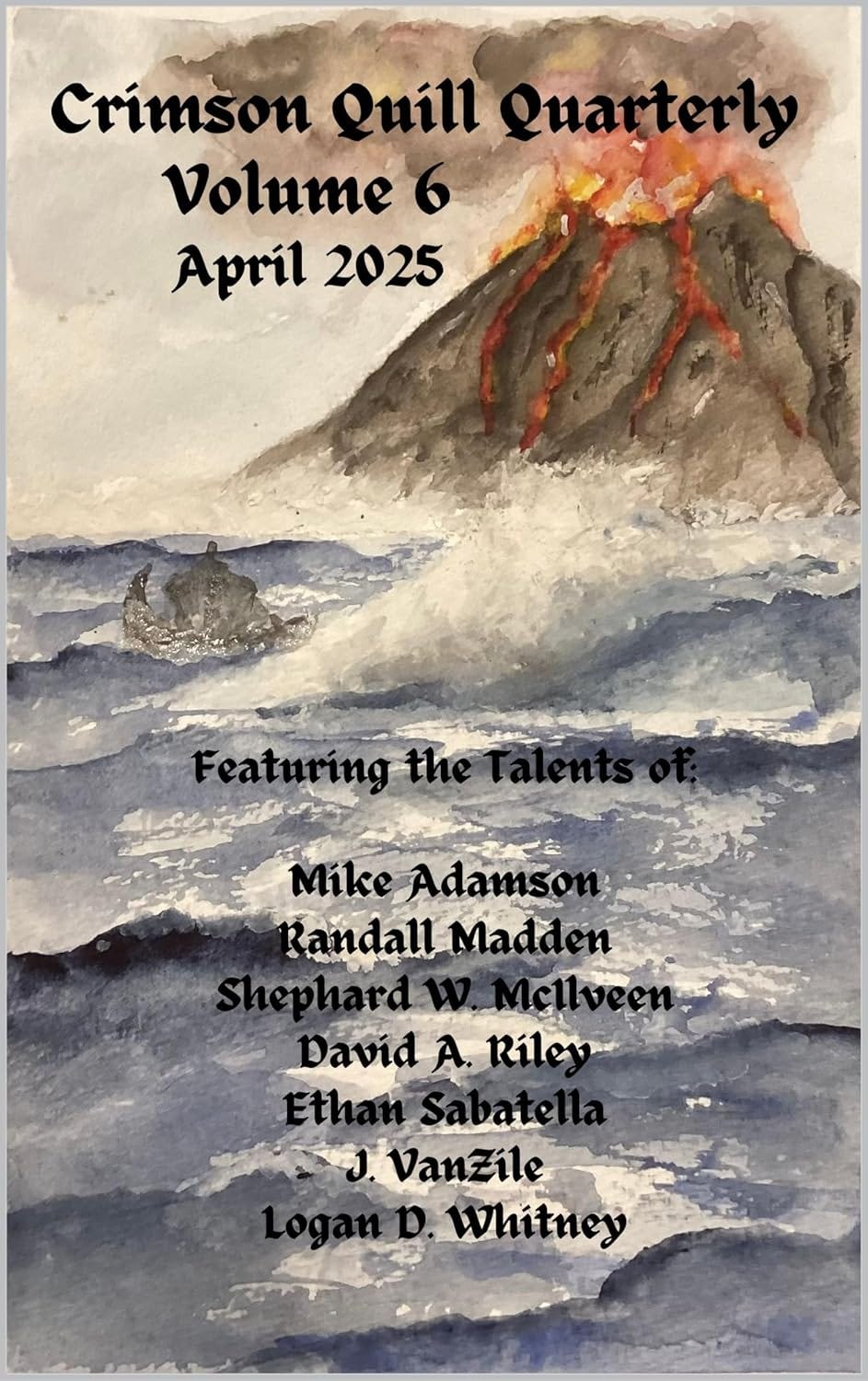"The Brave and the Bold" - The Scholarly Review I
A Celtic Studies scholar reviews Batman and Wonder Woman's caper in the Celtic Otherworld
This special series from DC Comics has been on my radar since before I even started Senchas Claideb. I had never expected Wonder Woman, much less Batman of all heroes, to be involved with a storyline based on Celtic mythology. The Brave and the Bold: Batman and Wonder Woman was written by Liam Sharp and published as a six issue series in 2018. I had not heard of it before 2023 when I started looking into collecting some Celtic-inspired media, but knew it would be a great addition to my reading list.
While I am fairly well-versed in Gaelic saga literature and folklore, the same cannot be said for my knowledge of the DC Comics universe. As such, I will be reviewing this graphic novel purely in a vacuum without referencing other events, characters, or concepts from DC that do not make an appearance or receive mention. Readers who know more about such things are free to inform me in the comments!
Also this review (and all others following) will have spoilers for the story (this review specifically focuses on the first chapter), so if you would like to experience this special comic for yourself first, you can get it from Amazon.
If you want to see my thoughts on another Celtic-inspired graphic novel, check out my series of Hound reviews:
"Hound" Review Index
I compiled each installment of my review for the dark fantasy graphic novel Hound by Paul J. Bolger here for readers to easily access. The posts here are indexed in order of publication date.
For this graphic novel, I had somewhat lower expectations than I did for something like Hound, which directly adapts stories from Irish sagas into a medium that will likely influence how modern audiences encounter and perceive the original stories. A Batman and Wonder Woman comic, at the risk of sounding dismissive, doesn’t really have the same onus to be “faithful” or “accurate” when handling Celtic myth and folklore—although a few stereotypes did crop up while reading. The most material draws from is the Mythological Cycle and general folklore surrounding fairies and the Otherworld in Irish tradition.
In terms of general thoughts on the graphic novel without diving deep into the story or its usage of Celtic elements just yet, I felt it was a neat short story and honest attempt at mixing popular superheroes with traditional folklore and mythology. The artwork is well-done although I have little reference aside from the classic comics from the ‘70s. I also did enjoy how Mills worked in some creative paneling utilizing knotwork for certain scenes. Since I’m not a lifelong comic-reader, there are certain quirks to this medium that leave me scratching my head slightly, that being the pacing; I’ve noticed comics sometimes jump quickly between panels, scenes, and events without much explanation or buildup, which can be a bit jarring for readers like me who often like to have a bit more to chew on. I also can’t really speak on how well either Batman or Wonder Woman were portrayed in this story since I haven’t read many of their series beforehand. It did, however, seem like Wonder Woman felt a little more realized or at least “comfortable” with being in an Otherworldly setting. Batman on the other hand comes off as very formal and analytical, which I suppose makes sense for his character outside of portrayals in more recent movies.
The Brave and the Bold uses the otherworldly land of Tír na nÓg as its primary setting, with a few jaunts to Gotham’s “Irish Quarter.” The story depicts Tír na nÓg as a place separate from Earth, but with some passages called “causeways” linking both worlds. For the purposes of tying it into the rest of the DC mythos, the story uses Wonder Woman’s home of Thremyscira as a comparable “hidden” realm as an example. Tír na nÓg is home to two main tribes of otherworldly beings (although there are other troll-like, goblinoid, and faerie creatures the story does not give much time to explain) taken directly from Irish mythological sagas: the Fomor and Dé Danann. The inhabitants of Tír na nÓg cannot leave dimension, save for Cernunnous Cernach who is also able to bring humans from Earth into the Otherworld. The land itself is ruled by King Elatha of the Fomorians, but its people seem to be in constant, recurring conflicts with one another as they have remained confined in Tír na nÓg for centuries.
In order to help foster peace among his kin, Cernunnous travels to Earth and recruits Wonder Woman due to her association with the Greek Gods, whom Cernunnous refers to as “cousins.” Meanwhile, Batman is investigating cases of “chronic lethargy” affecting Gotham’s Irish Quarter. In the same location, a homeless Irish man named Patrick O’Schull is seeking a way into Tír na nÓg via leylines.
From a scholarly perspective, I thought The Brave and the Bold’s introduction to its Celtic-inspired setting was fairly restrained and in some ways accurate to how the original stories depict traversal to the Otherworld. There are even several instances—asides and short anecdotes, mostly—that display the author’s dedication to researching the subject. Indeed the introduction, written by Jim FitzPatrick author of The Silver Arm, states this series was “well-researched” and I suppose as far as super hero comics go this does have a leg up, but there are quite a few liberties and areas that might have done better with a smidge more research.
One of the areas where some liberties are taken is with Cernunnous Cernach. Cernunnos (as the name is originally spelled) is a god from the Continental Celts who most famously appears on the Gundestrup Cauldron, an artifact pulled out of a bog from Denmark and is most often referred to as “the Horned God.” Brave and the Bold mostly focuses on Irish-related material so the inclusion of a Cernunnos figure feels a little off. Mills does provide a glossary at the end of the book which offers explanations on some of his choices, one of those being that he utilized parallels scholars might have drawn between Cernunnos and the Ulster hero Conall Cernach. Although Cernunnos’ name likely has something to do with horns (being that cern in Celtic languages sometimes means “horn”) Conall’s epithet refers to his “crooked neck.” I also don’t really know of any story or theory that labels either figure as people who can travel to the Otherworld; the figure of Oghma (creator of the ogham alphabet) is usually interpreted as a psychopomp (a being with the function of bringing souls to the afterlife or an otherworldly guide), but I suppose throwing in Cernunnos in some ways adds to the “cred” of a Celtic-themed story.

We only get a few brief glimpses of Tír na nÓg itself during this chapter, but it definitely seems to lean into the fantastic when it comes to the people, landscape, and architecture. The buildings appear to be closer to 14th century medieval townhouses and grand, fantasy-type castles rather than Iron Age forts or hovels. A lot of it seems to exist in this state between being reclaimed by nature and slowly fading ruins, which in some ways plays into certain themes normally found in Celtic poetry concerning the collapse of perceived “golden ages” and ideas of the Otherworld potentially representing a past world. The series also uses the device of time passing slower in the real world than in Tír na nÓg, which is actually the inverse of how the passage of how otherworldly time is normally portrayed in the source material—time often passes more slowly in the Otherworld while mortal visitors may return to Earth finding hundreds of years have passed.
In Irish literature and folklore, Tír na nÓg is an island (whose name means “The Land of the Young”) far to the west of Ireland inhabited by people who do not age. It is most famously featured in the Fenian Cycle (the set of stories chronicling Fionn mac Cumhaill and his Fianna) and is where Fionn’s son Oisín goes while the rest of his friends and family remain in Ireland. In Brave and the Bold, Tír na nÓg seems to exist more in a different dimension, but the “causeways” used to access it are somewhat reminiscent of the original sea-related associations many Otherworld journey tales have. The causeway Cernunnous brings Wonder Woman through is even called “the Giant’s Causeway” and utilizes the same geomorphic stones as in the landmark found in the north of Ireland.
One of the most interesting aspects of the setting is the inhabitants, represented primarily by the tribes of the Fomor and Dé Danann. There are some details revealed in later chapters that make clearer distinctions between both peoples, but it is possible for both to appear as human-like with pointed ears. One thing Brave and the Bold touches on which I felt was at least a decent attempt at addressing the history and little we know of when it comes to the Fomoire and Tuatha Dé Danann from the sagas is that both peoples are descended from common ancestors. Although popular culture tends to portray Fomorians as somewhat monstrous (The Brave and the Bold is also no exception as we will later see), credit for this comic is at least due when it at least acknowledges that the Fomoire and the Tuatha are likely of the same species but are different tribes as could be the case with other archetypal opposing god-like beings in mythology. Fomorians do receive a lot more monstrous qualities in later stories, but in considering their original dichotomy with the Tuatha it is likely they were another tribe rather than different creatures entirely.
Another interesting detail about the Otherworld in The Brave and the Bold is that Tír na nÓg is said to be “of Fomorian making.” Normally, readers familiar with stories of the Otherworld often associate the Otherworld—usually the variation accessible under faerie hills and such—with the Tuatha Dé. In “The Second Battle of Mag Tuiread,” however, when Bres1 goes to the Fomorians to ask them for help in reclaiming Ireland, they are described as “the warriors of the síd (faerie mounds).” The story does not elaborate much on this afterwards, but it is still interesting to consider what peoples would have inhabited the faerie mounds prior to the Tuatha being driven into them by the Gaels. I’m not sure if Mills came across this particular quote when he was researching for the comic, but it was a pleasant surprise to find, nonetheless.
Overall, Brave and the Bold kicks off with a very satisfying start in terms of how it handles the Celtic material. This part of the review mostly focused on how it sets up Tír na nÓg as its primary setting, but later parts will reveal a bit more about the story and how some details from traditional sagas are utilized as inspiration.
Special Advertisement!
I have been published again with Crimson Quill Quarterly in their sixth issue! You can pick up Kindle and paperback copies from Amazon today!
“‘Heart of the Depths’ by Ethan Sabatella: In this Stone Age Slasher, five youths break the rules of their tribe and stay out in the wilderness after nightfall. The superstitions of their people prove all too real as a terrible darkness creeps out from the Earth and stalks them one-by-one.”
Be sure to leave a review and spread the news with friends and family!
Thanks for reading this week’s post! Have you read this particular series? Leave your thoughts in the comments below! Tell your comic-loving friends about this if they haven’t heard of it as well!
Refer your friends to Senchas Claideb to receive access to special rewards, including a personalized Gaelic phrase and a free, original short story exclusive to top referees!
Shoot me a message!
If you like what I do, consider leaving a tip!
I write a little about Bres, the Battle of Mag Tuiread, and other Irish god-kings in this post below!
The God-Kings of Éirinn
This is sort of s sequel post to an article I wrote last March about three “old gods” of Ireland (linked below). This week’s post covers three figures from Irish saga literature who might have once been gods that ruled the ancient, prehistoric tribes of Ireland, the Túatha dé Danann (“Tribes of the Goddess Danu”). These fi…







Did not know about The Brave and the Bold at all, but I'm definitely going to check it out now.